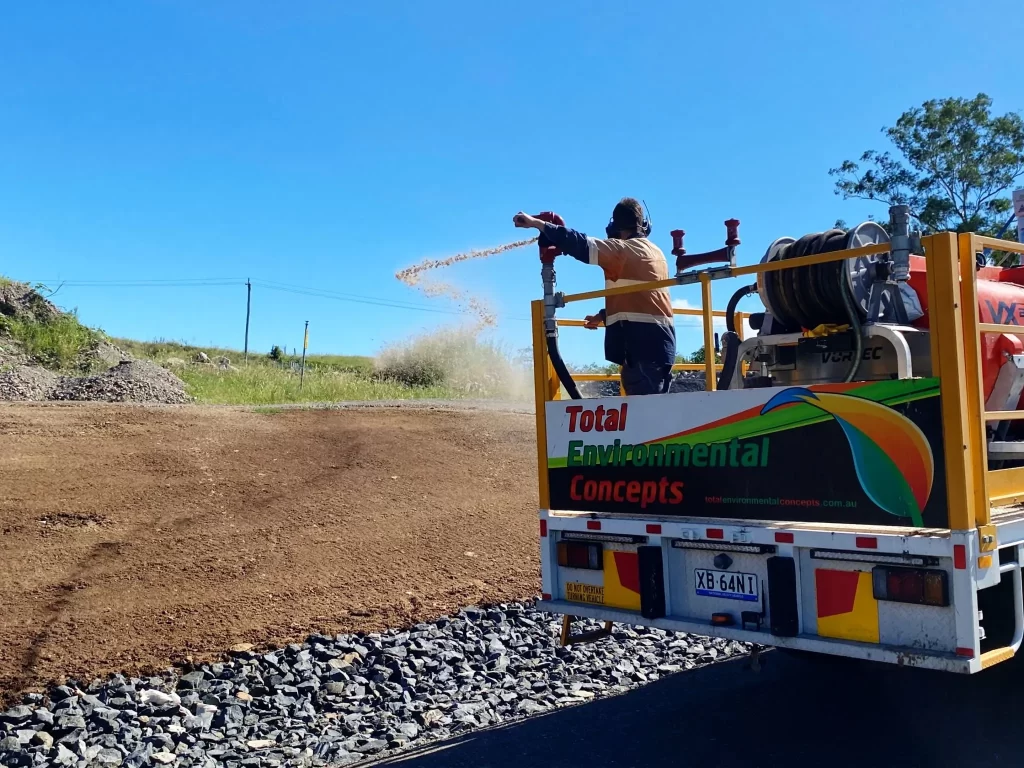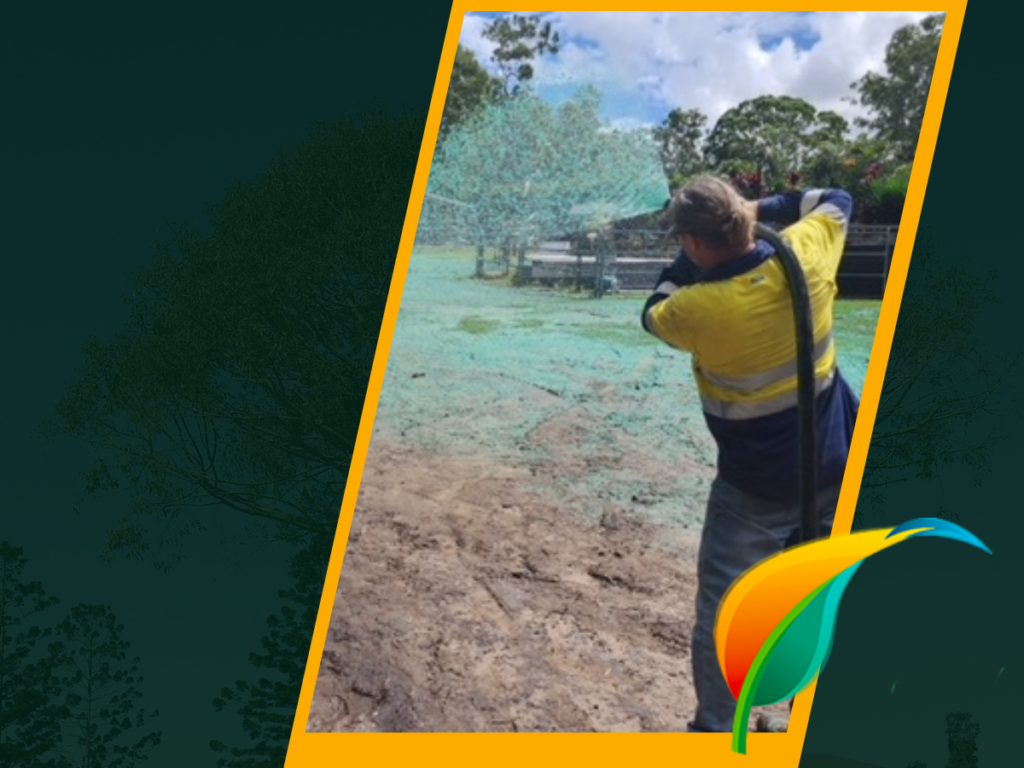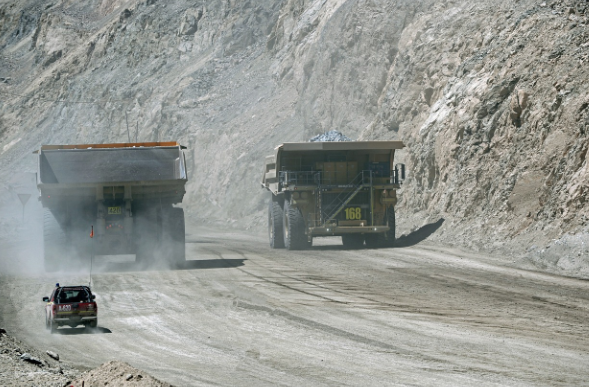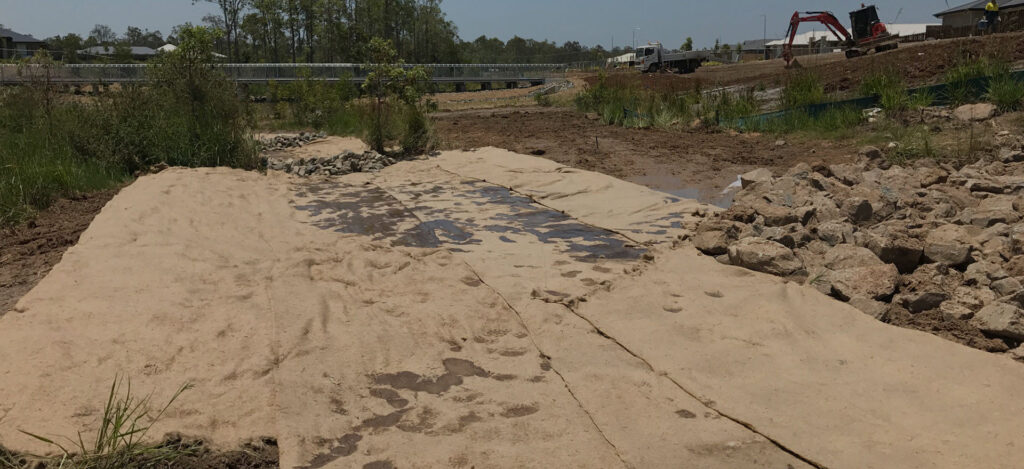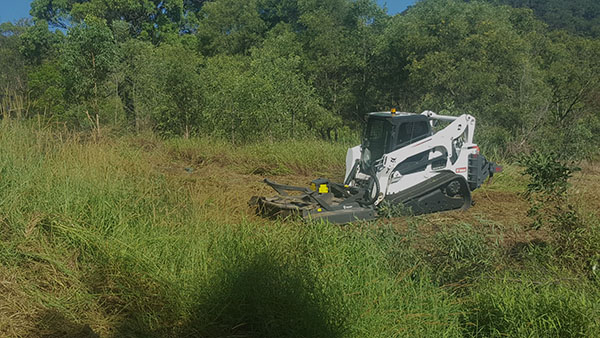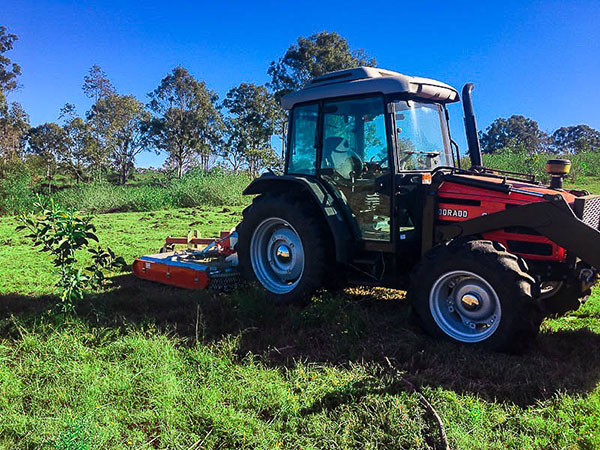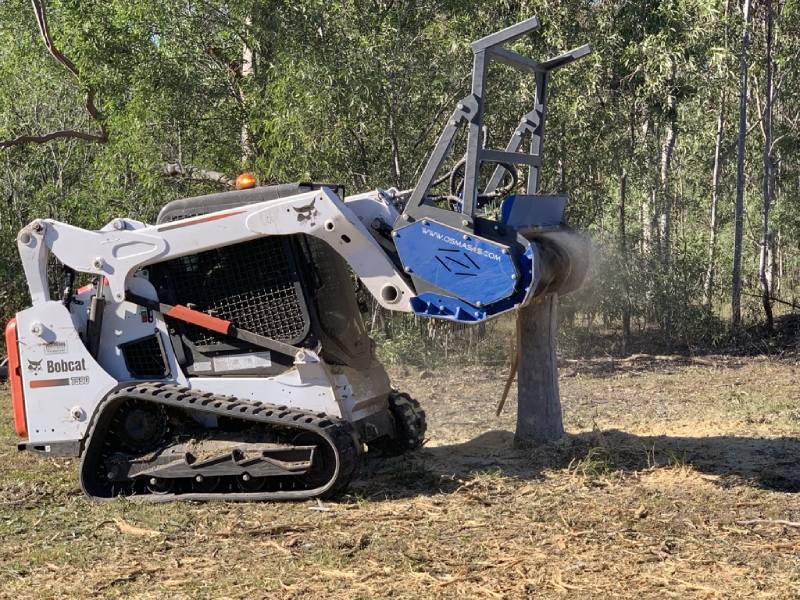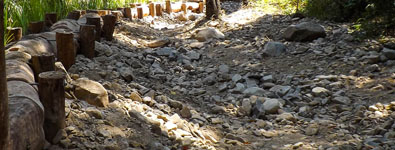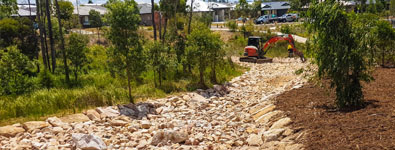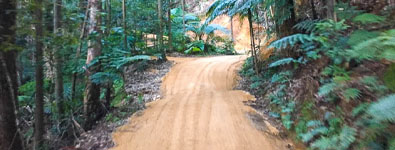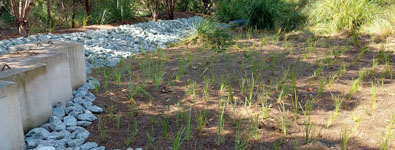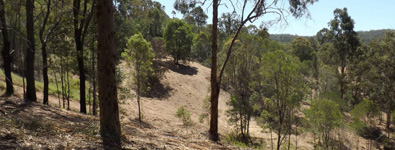Hydromulching is a highly effective method of controlling erosion, rehabilitating soil and revegetation — when it’s done right. While it’s often mistaken as a ‘spray and walk’ solution, following a tried-and-tested process, including correct site preparation, is crucial for a successful application.
As professionals in hydromulching for over a decade, we have developed a precise process that’s tailored to your land management needs to ensure effective results. If you’re considering hydromulching as a form of vegetation establishment and soil erosion, this guide will help you learn:
- What hydromulching is
- The best process for hydromulching
- Problems solved by hydromulching
What is hydromulching?
Hydromulching is a cost-effective method of spraying a slurry of water, seeds, fertiliser, mulch and tackifiers onto a prepared ground surface to establish vegetation or control erosion. This technique can be used on large-scale and difficult-to-reach areas, like slopes, which are often too difficult to treat with traditional methods. It’s not to be confused with hydroseeding, which is the hydraulic application of seed, primarily used for establishing large lawns and pastures.

Some of the benefits of hydromulching include:
- Restores degraded land quickly and effectively.
- Stablises soil and prevents erosion long-term.
- Improves soil health and plant establishment through microbial regeneration.
- Protects stormwater assets, wetlands and embankments.
- Meets environment compliance and revegetation targets.
- Cost-effective for large-scale land management.
The benefits of hydromulching are particularly valuable on challenging terrain where traditional methods fall short. It’s also widely used on mine sites, roadside batters and large cleared land parcels where fast, uniform vegetation growth is critical for meeting environmental obligations and minimising ongoing maintenance.
How is hydromulching done?
For hydromulching to be done properly, it should follow a precise 7-step process, including assessing and testing the site and soil to determine the right approach, clearing and preparing the site, mixing the correct solution, application and post-application care to ensure effective results. This method of hydromulching is highly cost-effective while producing fast, healthy vegetation growth, as well as stable, high-quality soil.
Site assessment.
Before hydromulching can be done, the site needs to be assessed to create a tailored strategy. This includes assessing:
-
- Soil texture and type to determine the presence of sand, clay, loam, etc., which can influence moisture retention and erosion risks.
- Soil pH and fertility, revealing the readiness of the soil for seed germination and plant growth, and where specific nutrients may be lacking.
- Existing vegetation or weeds, which can compete with new growth, particularly invasive species and contaminants, requiring weed control or soil remediation to treat prior to hydromulching.
- Slope stability, to assess if stronger binders or tackifiers may be needed for steeper slopes.
- Erosion risks, determining areas with severe runoff which may need additional erosion control measures.
Soil testing and amendments.
As hydromulch can only be effective in ideal soil conditions for plant life, testing the soil for essential data will help ensure it is primed appropriately. Data sourced includes levels of:
| Soil Condition | Problem | Solution Required Before Hydromulching |
|---|---|---|
| Compacted Soil | Prevents root penetration and water infiltration. | Ripping, aerating or deep tillage. |
| Hydrophobic (Water-Repellent) Soil | Water beads on the surface reduce seed germination. | Application of soil wetting agents or organic matter. |
| Acidic Soil (pH <5.5) | Limits nutrient availability. | Application of lime or dolomite. |
| Alkaline Soil (pH >8.5) | Can cause nutrient lock-up. | Application of gypsum or organic matter. |
| Low Organic Matter | Soil structure is poor with low fertility. | Application of compost, biochar or microbial inoculants. |
| High Salinity | Restricts water uptake. | Leaching with fresh water and added organic matter. |
Site clearing and surface preparation.
The process of hydromulching means the seeds, fertiliser and slurry does not penetrate the soil. So, proper surface clearing is important as seeds cannot root properly in a surface that is too hard. Every project will have unique site clearing and surface preparation needs, but may include:
- Removing debris, such as rocks, branches and non-decomposed plant material.
- Controlling existing weeds, such as using a herbicide or performing mechanical removal.
- Scarifying or loosening compacted soil to improve seed contact with the soil.
- Smoothing and grading the surface, while maintaining natural contours to prevent water runoff, which can reduce results.
Once the site has been inspected and tested, the right application and technique can be determined.
Hydromulch mixture selection.
Using the right mulch blend is critical for the success of hydromulching, with cheap materials or the wrong selection often leading to failure. It’s important that the data and information gathered from the inspection and testing is used to help determine the right mulch for the site conditions, slope and project goals, including:
- Wood-fibre mulch, ideal for slopes and erosion-prone areas, used for its strong soil adhesion and better moisture retention properties.
- Straw/cellulose blends, providing a long-lasting organic matter with high moisture retention, perfect for agricultural and restoration projects.
- Hydraulically applied compost, commonly used for enhancing microbial activitiy and improving soil structure in degraded soils and land rehabilitation projects.
As well as mulches, hydromulch slurry also contains:
- Tackifiers, essential for preventing mulch from washing away on steep slopes.
- Biotic soil amendments, which introduces beneficial microbes and fungi to improve soil health.
- Fertilisers, which provide essential nutrients, tailored to match soil testing recommendations.
Only once the different elements of the slurry are determined can equipment calibration be performed.

Mixing and equipment calibration.
Properly mixing and calibrating the hydromulching equipment must be done based on the individual hydromulch formula. Incorrect mixing can lead to clogging, uneven coverage or poor adhesion, impacting the end results. As part of the process:
- Water is added first before mulch, tackifier, seed and soil additives are gradually added.
- High-pressure hydroseeding equipment is used for even dispersion of mixture.
- The slurry viscosity is monitored to ensure it doesn’t get too thick, clogging the nozzles, or too thin, resulting in a poor end result.
Ideally, the mix will have a smooth, uniform texture similar to thick paint, avoiding a watery soup-like texture to ensure proper surface adhesion.
Application.
Once the ideal mixture has been created and the equipment is calibrated to suit the surface and landscape, application can begin. Hydromulching can only be done in dry, still conditions, as heavy winds or rain can interfere with even distribution. With the perfect conditions, two passes will be performed, with the first pass lightly coating the soil and second pass to build up the thickness of the mixture on the surface. It’s important the nozzle is kept at a 45-degree angle to prevent overspraying and even coverage.
With a professional hydromulching expert, the service is not complete. Post-application care and site monitoring is essential to guarantee success.
Site monitoring & post-application care.
Following hydromulching, the application area will need to be on a stringent watering schedule for up to 6 weeks, including:
- Daily watering for the first 2 weeks if natural rainfall is not sufficient.
- Watering two to three times per week in weeks 3 to 6.
- Soil moisture monitoring after 6 weeks, with irrigation only used if needed.
Weed control, vegetation and erosion control inspections and monitoring are also important in the weeks following application. Any invasive weeds should be removed as soon as possible to avoid competition with desired vegetation, while signs of low-germination rates may indicate the need for a second hydromulch application. Any signs of washouts, bare spots or mulch displacement may also require another application of hydromulch or additional erosion control methods, such as blankets or coir logs, for a long-term, sustainable solution.
Get Your Hydromulching Done By The Experts
Put decades of experience behind your hydromulching for the most cost-effective and reliable results with Total Environmental Concepts. Our hydromulching specialists regularly work with local councils, government bodies, civil companies, developers and land managers to produce more effective plant growth and soil stabilisation. Contact us to discuss your project needs today.



